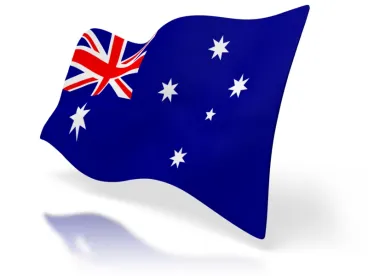The Australian Patent Office (IP Australia) has issued final patent eligibility guidance under the Australian High Court’s decision in D’Arcy v. Myriad Genetics, Inc. Where the USPTO extrapolated from the U.S. Supreme Court decision when it promulgated its patent eligibility guidance, IP Australia seems to have taken a more conservative approach. This means that despite similar rulings against the patent eligibility of Myriad’s BRCA DNA claims, it may be possible to patent subject matter in Australia that no longer can be patented in the U.S.
D’Arcy v. Myriad Genetics
In D’Arcy v. Myriad Genetics, the High Court of Australia decided that Myriad’s claims to the isolated BRCA1 gene did not constitute “a manner of manufacture” that could be patented in Australia. In reaching its decision, the court focused on the idea that the claimed DNA embodies “the same information as contained in the DNA of the person from which the nucleic acid was isolated,” and also expressed concerns about the breadth of the claims, stating, “The very large, indeed unquantified size of the relevant class of isolated nucleic acids, all of which bear the requisite information, raises the risk of a chilling effect upon legitimate innovative activity outside the formal boundaries of the monopoly.”
Read more about the High Court decision in this article.
IP Australia’s Understanding Of Myriad
In its newly issued patent eligibility guidance, IP Australia summarized the High Court decision as follows:
The High Court unanimously decided that claims 1-3 did not define a manner of manufacture. The Court found that, while formulated as claims to a product (i.e. a nucleic acid molecule), the substance of the invention was the information embodied in the sequence of nucleotides of the molecule. The Court decided that the information was an inherent part of the molecule and not “made” (ie [sic] created or modified) by human action.
IP Australia also noted:
The majority did not deliberate about “products of nature” versus “artificially created products” but found that, in a case where the substance of the claimed invention was genetic information that was not “made”, the claiming of the alleged invention as an isolated product did not confer eligibility. The substance was outside the established bounds of patentability and extending the concept of manner of manufacture to that subject matter was not justified.
IP Australia’s Patent Eligibility Guidance
IP Australia’s patent eligibility guidance outlines four questions to consider when assessing patent eligibilty:
-
What is the substance of the claim (not merely its form)?
underlying factors to consider include:
~ the size of the class of compounds covered by the claim
~ whether the compounds embody or convey genetic information that is of importance to the utility of the claimed invention
~ the emphasis of the claim
~ whether the product is a step along the way to a process or method that is the real invention. -
Has the substance of the claim been “made” or changed by man, or is it “artificial”?
(commentary in the guidance indicates that “made” can result from creation or modification, but not merely replication, and that “made” can result from isolation or purification when the substance of the claim is properly directed to a chemical product)
underlying factors to consider include:
~ physical differences between the claim and the natural state
~ labor required to produce the product -
Does the invention have economic utility?
-
Does the invention as claimed represent a new class of claim?
Likely Patent Eligible
The last question seems to provide the most room for extrapolation of Myriad, but the patent eligibility guidance seems to limit such extrapolation by identifying categories of subject matter that have been been patented “without rejection,” including:
-
Recombinant or isolated proteins
-
Pharmaceuticals and other chemical substances
-
Methods of treatment
-
Methods of applying herbicides
-
Applications of computer technology
The IP Australia patent eligibility guidance suggests that such subject matter remains patent eligible, and also suggests that “[c]laims to plants and micro-organisms should be considered carefully as there are significant factors supporting eligibility of this subject matter.”
Clearly Not Patent Eligible
The IP Australia patent eligibility guidance states that “claims to the following subject matter are clearly excluded” under the Myriad decision:
-
Isolated naturally occurring nucleic acid molecules whether:
-
DNA or RNA
-
human or non-human
-
coding or non-coding
-
Possibly Not Patent Eligible
The IP Australia patent eligibility guidance states that “[c]laims to the following are excluded where they merely replicate the genetic information of a naturally occurring organism,” but “may be patentable where the utility of the invention lies in genetic information that has been ‘made’ (eg [sic] non-naturally occurring chimeric nucleic acid)”:
-
cDNA and synthetic nucleic acids
-
probes and primers
-
isolated interfering/inhibitory nucleic acids
More Patent Eligible Subject Matter Down Under
As stated by Karen Bentley and James Cherry in their article for Freehills Patent Attorneys, it appears that the IP Australia patent eligibility guidance “is going to permit broader claims than it appears the USPTO will currently allow. But it is going to require more analysis of any given claim and a consideration of its merits in accordance with the 4 questions.”




 />i
/>i

